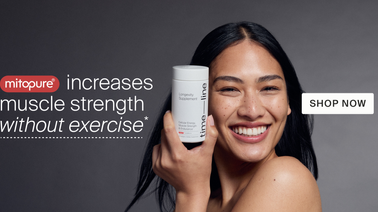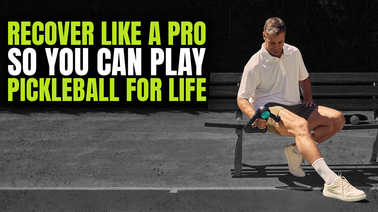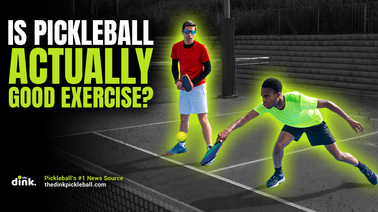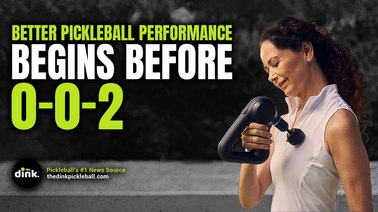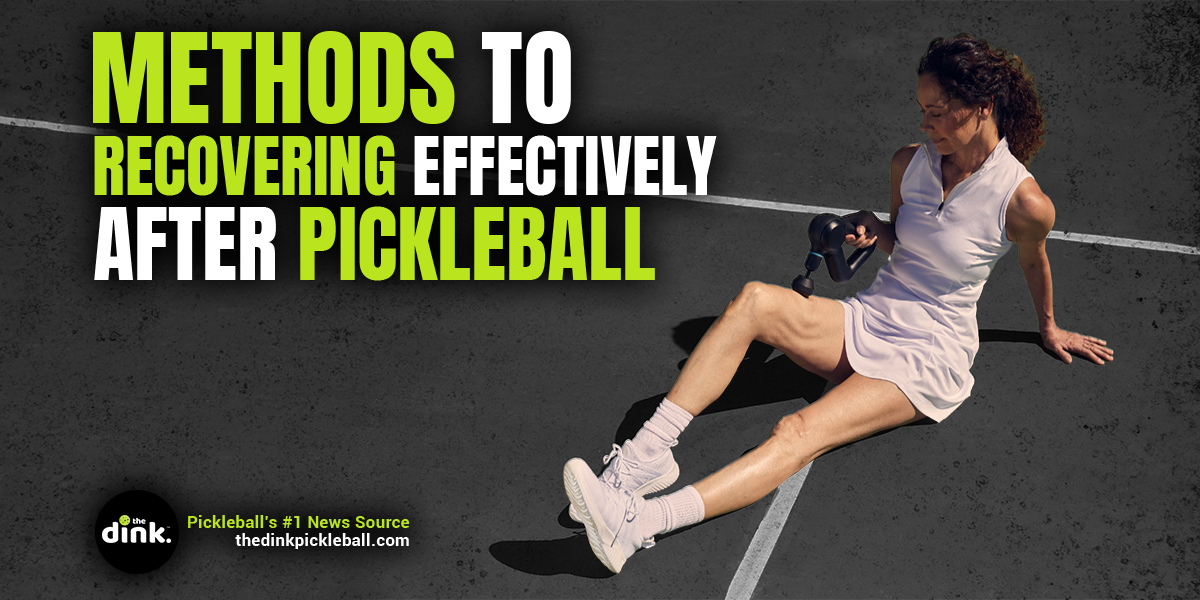
A life lesson we all eventually learn is that recovery after sports (yes, even pickleball) is not optional. When you're young, it's easy. Your body seemingly does all the work itself, and you wake up the next day ready to go again.
As you age, those recovery processes age, too, and instead of waking up ready to play again, you feel like you were hit by a bus.
The truth is, no matter your age, if you don't develop an effective recovery process, you're making a huge mistake, and your body will pay dearly for it over time.
This article is all about recovery after pickleball and ways to stay in each match longer and be ready to hop back on the court sooner.
First, some poll results.
Do pickleballers prioritize recovery?
Our recent poll asked: “What products do you use to optimize recovery after pickleball?”
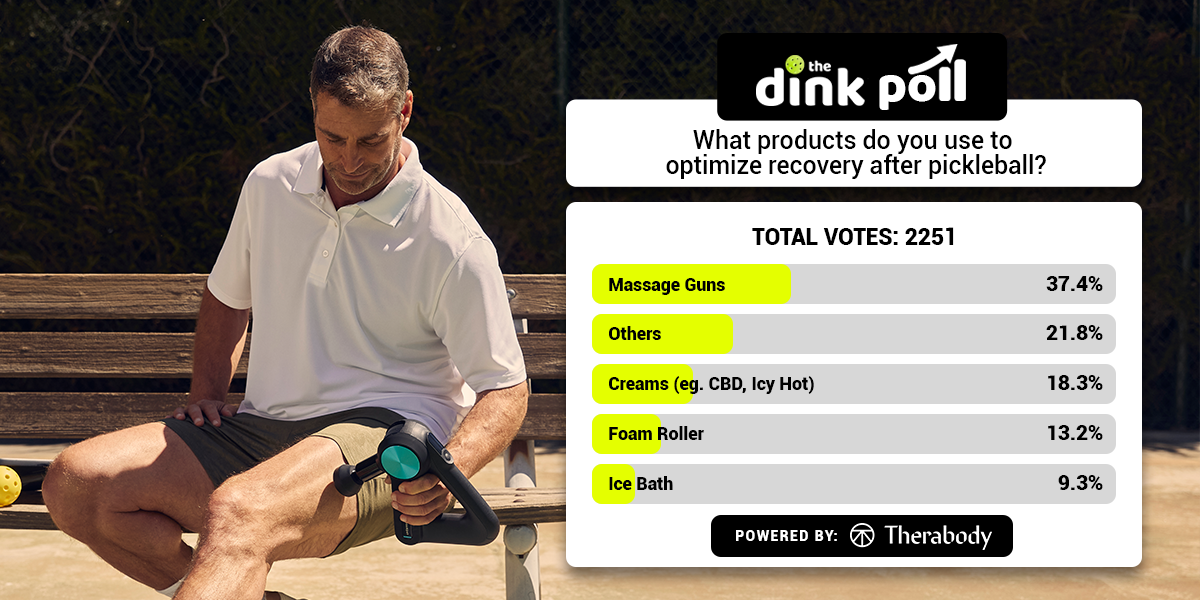
More than one-third (37.4 percent) of you said you use massage guns to help you recover. The rest said you use a cream, foam roller, ice bath, or other.
Let’s discuss how each of these methods might be helping you and how we can maximize our recovery the best.
Recovery is not optional; it's science
Wear and tear on our bodies isn’t just painful; it can lead to injury. Every pickleball player can agree that the last thing they want in their lives is something that prevents them from playing pickleball.
The truth is that no matter the sport you play when you push your body to its limits, you’re breaking down tissue and cells. When we exercise, we create micro tears in our muscles, which help them grow bigger and stronger than before.
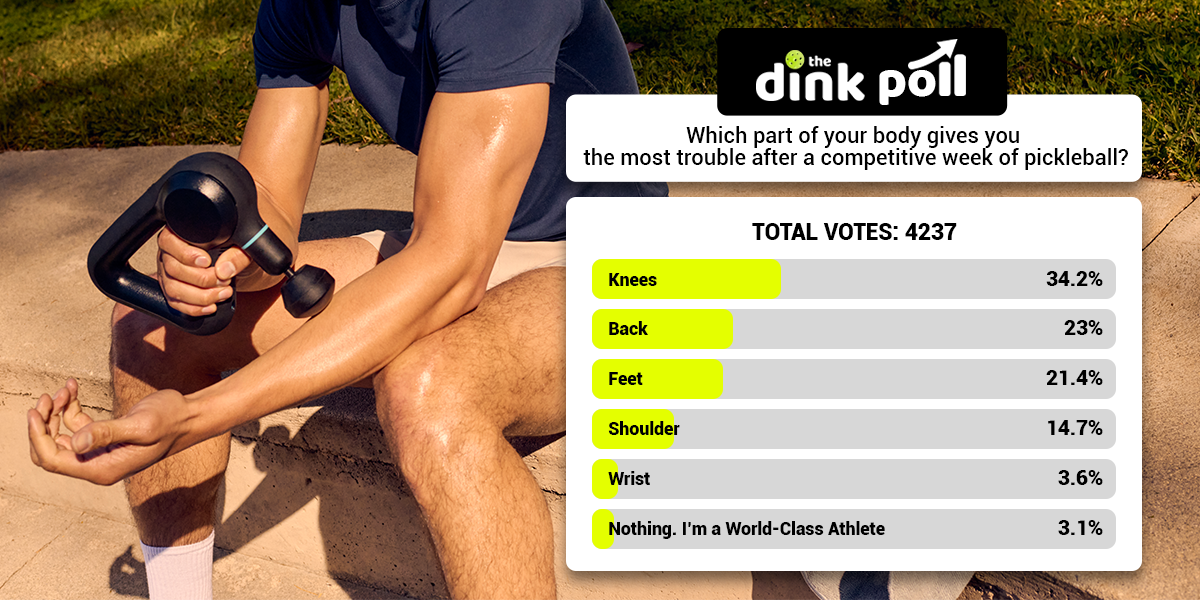
This is how “gains” are made, especially in the weight room. However, the body needs time to rest and recover to see those gains.
This is why having a recovery routine after playing pickleball is so critical. Unfortunately, many of us take a passive approach to recovery. We think we'll be fine sitting on the couch or drinking a little extra water.
But that’s not good enough – or at least it won’t be for long.
Effective recovery involves resting, stretching, and using proper tools to help us recover quicker and better.
How to recover after pickleball
The body is amazing; its ability to recover and keep us going is nothing short of a miracle. But it functions best when we support it.
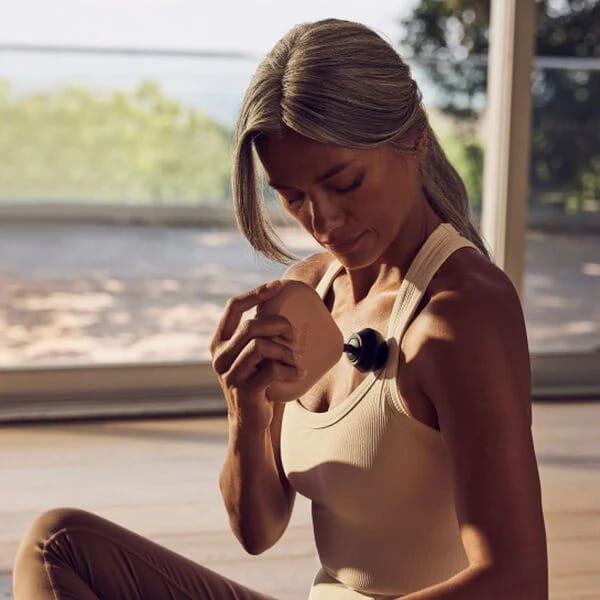
Here are some ways you can ensure good recovery after pickleball:
Hydrate
Yes, you should drink water before, during, and after you play, but water alone might not be enough. When we sweat, we also lose electrolytes. These minerals help muscles and nerves function correctly, balance the fluids in our cells, and keep our hearts pumping.
We get most of our electrolytes through food like fruits and vegetables, dairy products, and supplements.
Eating a balanced meal while playing sports can be challenging, but it's not difficult to add some electrolyte supplements to a water bottle to ensure we're replenishing what we lost.
Stretch
Flexibility plays a significant role in how our muscles handle strain and fatigue. Research shows that stretching can reduce the likelihood of injury, improve overall movement, and remove aches and pains after exercise.
Always take the time necessary to stretch your major muscle groups before and after you play. These muscles include calves, hamstrings, quads, hips, glutes, core, and arms. Stretching doesn't have to be complex or lengthy; even a few minutes can have a significant impact.
Ideally, you should stretch after you've warmed up your muscles a bit. So, if you stretch before playing pickleball, do some cardiovascular work (light jog, calisthenics, or jumping jacks) first.
Rest and sleep
Recovery happens the most when we sleep. The body needs rest to rebuild and repair the muscles, tissues, and bones stressed during the day. If we don't sleep enough, our bodies struggle to recover fully.
If you have a nagging injury or overly-worked muscles, prioritize rest. Yes, taking a day off from open play might be annoying at the moment, but it's a lot better to take that day off than risk an injury that puts you on the sideline for weeks.
During your rest, be sure to do some light exercise and stretching to keep your muscles loose and your body less achy.
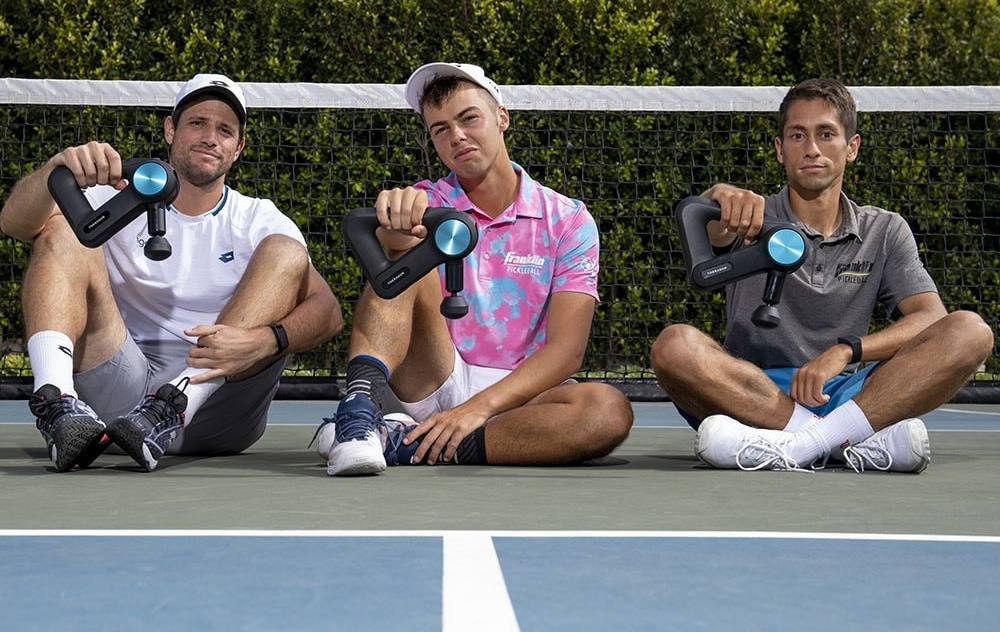
Invest in recovery
During play and maybe even right after, our adrenaline is pumping, and we rarely feel the exhaustion our bodies are experiencing. It’s typically not until the car ride home or after you’ve sat around for a few minutes that you notice it.
One of the best ways to stave off injury or recover quicker is to invest in easy-to-use tools. In the poll, massage guns were the most popular way people like to recover. And this is for good reason, as we’ll explore below.
Other equipment, like stretch bands, foam rollers, baths, and compression gear, can also aid recovery.
Stretch bands
Stretch bands are great to have around the house. They are inexpensive and can provide different resistance levels depending on how tight everything is.
They are even great for improving wrist flexibility and strength for those backhand flicks.
Foam rollers
A foam roller works big muscles – like your back or calves – really well. It helps you get knots out of your muscles by letting gravity, and your body weight do all the work.
Baths and compression gear
Adding Epsom salt to a warm bath or plunging your entire body into icy water can also help in recovery by reducing inflammation and relieving aches and pains.
Compression gear like socks or advanced compression equipment relieves feet, calves, and arms.
And, last but not least – especially since it was number one in the poll – is massage guns.
Massage guns
Massage guns, like those from Therabody, use percussive massage to stimulate cells and increase blood flow to targeted areas. They can be used to relieve sore spots or loosen up tight areas.
The increased blood flow helps oxygen and nutrients move around your body more quickly, helping reduce inflammation and muscle tension.
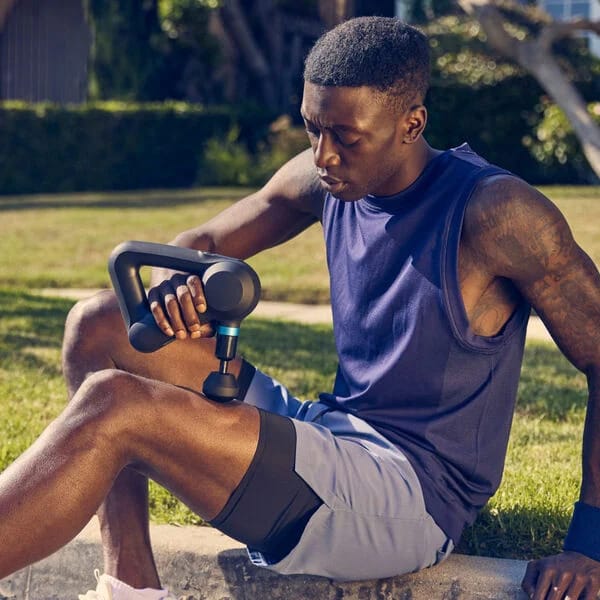
Thanks to the different speeds and head attachments, you can treat specific pain points and increase or decrease the pressure based on your comfort level.
My own testimony for the Theragun
On a personal note, I can tell you with all sincerity that I love my Theragun. I’m currently dealing with tight calves, which cause my right foot to supinate (rollover). After playing a lot of pickleball, I get some pain in the side of my foot because of it.
The Theragun helps me loosen muscle tightness, and I follow it up with stretch bands that help me realign my foot and ankle. When I don’t use it, the pain worsens throughout the day and eventually causes my ankle to lock on me.
I drove to my local pickleball club recently and only played one game before my ankle started acting up. So, I had to drive right back home and use this recovery method on that spot. Fortunately, it provided immediate relief.
If I’d taken the Theragun with me or done it before playing, I likely would’ve been able to play longer instead of wasting my evening.
When I play tournaments, I always take my Theragun. I assume since many of you mentioned massage guns as your top recovery tool, you do, too.
Recovery is a process, not a one-and-done
Recovery is not something you do once; it’s a constant process with maintenance in between. Combining everything mentioned above and proactively preparing your body will go a long way toward helping you recover quickly and keeping you on the courts longer.



